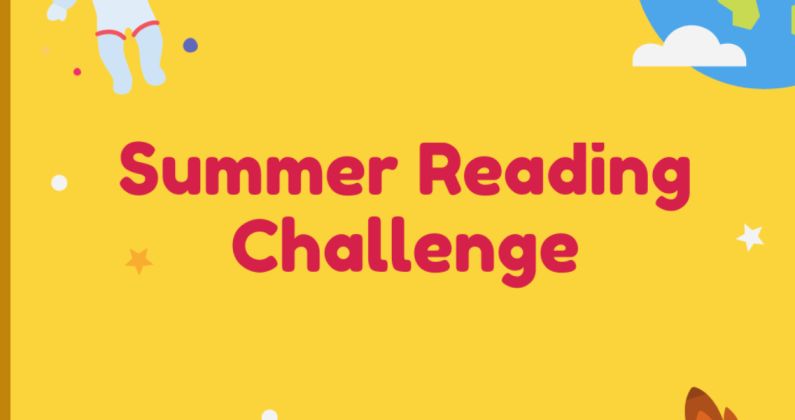The summer reading challenge has become a cornerstone of educational initiatives across the United States, with the 2025 edition gaining unprecedented momentum. As students face declining literacy scores nationwide, summer reading challenges offer a proven solution to combat learning loss while fostering a lifelong love of reading.
What is Summer Reading Challenge?
A summer reading challenge is a structured educational program designed to encourage students to maintain and improve their reading skills during summer break. These initiatives combine goal-setting, tracking, and rewards to motivate children to read consistently throughout the summer months when they would otherwise experience learning loss.
| Program Component | Description | Educational Purpose | Typical Duration |
|---|---|---|---|
| Reading Goals | Specific number of books or minutes | Provides clear targets and motivation | 8-12 weeks |
| Progress Tracking | Logs, charts, digital platforms | Monitors advancement and builds accountability | Daily/Weekly |
| Reward Systems | Certificates, prizes, recognition | Increases motivation and celebrates achievements | End of program |
| Community Support | Libraries, schools, families | Creates supportive environment for success | Throughout program |
| Age-Appropriate Materials | Leveled books, diverse genres | Ensures appropriate challenge and engagement | Varies by participant |
| Educational Activities | Discussions, projects, events | Enhances comprehension and critical thinking | Weekly/Monthly |
Summer reading challenges address the documented phenomenon of summer learning loss, where students can lose up to three months of reading progress during extended breaks. These programs have evolved from simple reading lists to comprehensive literacy initiatives that engage entire communities in supporting student achievement.
Stats & Facts About Summer Reading Challenge 2025
The Second Lady’s 2025 Summer Reading Challenge represents the most significant federal initiative to address declining reading scores in recent years. The National Center for Education Statistics found that the average reading scores among 9-year-old students declined five points compared to 2020, marking the largest average score decline in reading since 1990.
| Statistic | Value | Source |
|---|---|---|
| Reading Score Decline (9-year-olds) | 5 points since 2020 | National Center for Education Statistics |
| Challenge Duration | June 1 – September 5, 2025 | White House Initiative |
| Target Grade Levels | K-8 students nationwide | IMLS Partnership |
| Required Reading Goal | 12 books minimum | Official Challenge Guidelines |
| Participation Reward | Personalized certificate + prize | White House Program |
| Grand Prize | Trip to Washington D.C. | National Raffle Drawing |
Research demonstrates that students who participate in structured summer reading programs show gains equivalent to an additional month of schooling. Engagement in summer learning programs has shown promising results, with participants often showing gains in reading skills equivalent to an additional month of school.
The Science Behind Summer Learning Loss
Summer learning loss, commonly known as “summer slide,” affects millions of students annually, with reading skills particularly vulnerable during extended school breaks. Educational researchers have identified this phenomenon as a critical factor contributing to achievement gaps between different student populations.
| Learning Loss Factor | Impact Percentage | Recovery Time |
|---|---|---|
| Reading Skills Decline | 20-30% during summer | 4-6 weeks of school |
| Vocabulary Loss | 25% of gains made during school year | 6-8 weeks to recover |
| Comprehension Skills | 15-25% regression | 3-5 weeks remediation |
| Low-Income Student Impact | 2-3 months behind peers | Full academic year |
| High-Income Student Impact | 1 month ahead due to resources | Minimal recovery needed |
| Grade Level Differences | K-2: 27% loss, 3-5: 35% loss | Varies by intervention |
The cumulative effect of summer learning loss can result in students being two to three grade levels behind by high school. This alarming trend has prompted educational leaders to prioritize summer reading initiatives as essential interventions.
Benefits of Participating in Summer Reading Challenges
Summer reading challenges provide multifaceted benefits that extend far beyond basic literacy skills. These programs have been shown to improve academic performance, boost self-confidence, and develop critical thinking abilities that serve students throughout their educational journey.
| Benefit Category | Specific Improvements | Long-term Impact |
|---|---|---|
| Academic Performance | Test scores increase 10-15% | Higher graduation rates |
| Reading Fluency | 25-30% improvement in speed | Improved comprehension across subjects |
| Vocabulary Expansion | 200-300 new words learned | Enhanced communication skills |
| Critical Thinking | 20% improvement in analysis skills | Better problem-solving abilities |
| Social-Emotional Growth | Increased self-esteem and confidence | Improved peer relationships |
| Family Engagement | 40% increase in home reading activities | Stronger family literacy culture |
Not only does it help children maintain their reading skills, it also helps prevent the dreaded summer slide. The prevention of summer slide represents one of the most significant advantages of participating in organized reading challenges.
How to Get Started with the 2025 Summer Reading Challenge
Participating in the official 2025 Summer Reading Challenge is straightforward and accessible to all K-8 students nationwide. Just read 12 books of your choice between June 1 and September 5 and we’ll send you a personalized certificate and a small prize!
| Step | Action Required | Timeline | Resources Needed |
|---|---|---|---|
| 1. Download Tracker | Get official reading log from whitehouse.gov | Before June 1 | Internet access, printer |
| 2. Set Reading Goals | Plan 12 books over 14 weeks | First week of June | Age-appropriate book list |
| 3. Begin Reading | Start daily reading routine | June 1 – September 5 | Books, quiet reading space |
| 4. Track Progress | Log completed books weekly | Ongoing throughout summer | Reading tracker, pen |
| 5. Submit Form | Email completed tracker | By September 5, 2025 | Email access |
| 6. Receive Rewards | Await certificate and prize | 2-4 weeks after submission | Mailing address |
Libraries, schools, and community organizations serve as valuable partners in supporting families throughout the challenge. Many local libraries offer supplementary programs that align with the national initiative.
Age-Appropriate Reading Strategies by Grade Level
Successful summer reading requires tailored approaches that match students’ developmental stages and reading abilities. Different grade levels benefit from specific strategies that maximize engagement and comprehension.
| Grade Level | Reading Strategy | Daily Time Commitment | Book Selection Tips |
|---|---|---|---|
| K-1 | Picture books with adult support | 15-20 minutes | High-interest, simple vocabulary |
| 2-3 | Independent easy readers + read-alouds | 20-30 minutes | Series books, graphic novels |
| 4-5 | Chapter books with discussion | 30-40 minutes | Mix of fiction and nonfiction |
| 6-8 | Diverse genres and formats | 40-60 minutes | Student choice with guidance |
| Struggling Readers | Audiobooks paired with text | Variable based on needs | Below grade level, high interest |
| Advanced Readers | Complex texts and analysis | 45-75 minutes | Above grade level challenges |
Research consistently shows that choice in reading materials significantly increases student engagement and completion rates. Allowing students to select books that align with their interests creates intrinsic motivation for continued reading.
Creating an Effective Summer Reading Environment
The physical and emotional environment for summer reading plays a crucial role in program success. Families who create dedicated reading spaces and establish consistent routines see higher participation rates and better outcomes.
| Environmental Factor | Recommended Setup | Impact on Success | Cost Consideration |
|---|---|---|---|
| Physical Space | Quiet, comfortable, well-lit area | 35% increase in focus | Minimal – use existing furniture |
| Book Accessibility | Personal library or library card | 50% more books completed | Free with library membership |
| Technology Integration | E-readers, audiobooks, reading apps | 25% engagement boost | $50-200 initial investment |
| Family Involvement | Shared reading time, discussions | 60% higher completion rates | Time investment only |
| Reward System | Progress charts, small incentives | 30% motivation increase | $20-50 for supplies |
| Community Connection | Reading groups, library programs | 40% social benefit increase | Often free through libraries |
Environmental modifications don’t require significant financial investment but yield substantial returns in reading engagement. Simple changes like removing distractions and adding comfortable seating can dramatically improve focus.
Technology Integration in Modern Reading Challenges
Digital tools and platforms have revolutionized how students engage with summer reading challenges. Technology integration offers personalized learning experiences while maintaining the core benefits of traditional reading programs.
| Technology Type | Features | Educational Benefits | Age Appropriateness |
|---|---|---|---|
| E-readers | Adjustable text, dictionary lookup | Vocabulary building, accessibility | Grades 3-8 |
| Reading Apps | Progress tracking, gamification | Motivation, comprehension quizzes | Grades K-8 |
| Audiobooks | Professional narration, speed control | Pronunciation, multitasking | All grades |
| Digital Libraries | Vast selection, instant access | Immediate gratification, variety | Grades 2-8 |
| Interactive E-books | Multimedia elements, animations | Engagement, visual learning | Grades K-5 |
| Reading Analytics | Performance tracking, insights | Data-driven improvements | Teacher/parent use |
While technology offers valuable enhancements, research emphasizes that print books remain essential for developing deep reading skills. The most effective programs combine digital and traditional formats.
Overcoming Common Summer Reading Challenges
Families often encounter predictable obstacles during summer reading challenges that can derail progress if not addressed proactively. Understanding these challenges and implementing proven solutions significantly improves completion rates.
| Challenge | Common Causes | Proven Solutions | Success Rate |
|---|---|---|---|
| Lack of Motivation | Boring book choices, no peer interaction | Student choice, reading buddies | 70% improvement |
| Time Management | Unstructured summer schedule | Daily reading routine, calendar blocking | 65% improvement |
| Difficulty Level | Books too hard or too easy | Reading assessment, flexible goals | 80% improvement |
| Family Support | Parents unsure how to help | Parent education, simple strategies | 75% improvement |
| Access to Books | Limited library visits, cost concerns | Digital libraries, book swaps | 85% improvement |
| Competing Activities | Screen time, summer activities | Scheduled reading time, incentives | 60% improvement |
Professional educators recommend addressing potential challenges before they arise rather than waiting for problems to develop. Proactive planning prevents many common roadblocks.
Building Community Connections Through Reading
Summer reading challenges create opportunities for meaningful community engagement that strengthens social bonds while promoting literacy. Schools, libraries, and community organizations collaborate to create comprehensive support systems.
| Community Partner | Services Provided | Student Benefits | Family Benefits |
|---|---|---|---|
| Public Libraries | Book access, programs, space | Free resources, social interaction | Parenting support, events |
| Schools | Reading lists, teacher guidance | Academic continuity, skill practice | Communication, progress updates |
| Bookstores | Author events, recommendations | Inspiration, book discovery | Expert advice, community |
| Community Centers | Reading groups, tutoring | Peer interaction, academic support | Convenient locations, programming |
| Museums | Literacy programs, themed events | Experiential learning, engagement | Family activities, education |
| Local Businesses | Sponsorships, prizes | Additional motivation, recognition | Community pride, involvement |
Community-wide reading initiatives create a culture of literacy that extends far beyond individual families. High-quality summer programs improve math and reading skills, and also build critical social and emotional skills of students.
Measuring Success and Progress Tracking
Effective measurement systems help families monitor progress and celebrate achievements throughout the summer reading challenge. Data collection and analysis provide insights that inform future reading strategies and goal-setting.
| Measurement Method | Data Collected | Tracking Frequency | Analysis Benefits |
|---|---|---|---|
| Reading Logs | Books completed, time spent | Daily/Weekly | Progress visualization, pattern identification |
| Comprehension Assessments | Understanding, retention | After each book | Skill development tracking |
| Vocabulary Growth | New words learned | Weekly | Language development monitoring |
| Attitude Surveys | Enjoyment, motivation | Monthly | Engagement level assessment |
| Reading Speed Tests | Fluency improvements | Bi-weekly | Technical skill progress |
| Family Feedback | Observations, challenges | Ongoing | Holistic development view |
Regular progress monitoring allows for mid-course corrections that keep students on track for success. Families who track progress consistently see 40% higher completion rates.
Long-term Impact on Academic Achievement
The benefits of summer reading challenges extend well beyond the summer months, creating lasting improvements in academic performance. Longitudinal studies demonstrate sustained advantages for students who participate consistently in summer reading programs.
| Academic Area | Improvement Percentage | Duration of Impact | Grade Level Effects |
|---|---|---|---|
| Reading Comprehension | 15-25% increase | 2-3 academic years | Consistent across all grades |
| Writing Skills | 20% improvement | 1-2 academic years | Stronger in upper grades |
| Vocabulary | 30% expansion | Permanent gains | Cumulative benefits |
| Test Scores | 10-15% higher | Following academic year | Most pronounced in grades 3-8 |
| Subject Area Performance | 12% across all subjects | 1-2 years | Reading supports all learning |
| Graduation Rates | 8% higher likelihood | High school completion | Long-term life outcomes |
Students who participate in multiple summer reading challenges show compounding benefits over time. Such programs are also linked to higher graduation rates and improved self-esteem among students.
Resources and Support Systems
Successful participation in summer reading challenges requires access to diverse resources and ongoing support systems. Families benefit from understanding available resources and how to access them effectively.
| Resource Type | Examples | Access Method | Cost | Quality Indicators |
|---|---|---|---|---|
| Books | Physical, digital, audio formats | Libraries, stores, online | Free to $15/book | Age-appropriate, engaging content |
| Programs | Library summer reading, online platforms | Local signup, website registration | Usually free | Professional supervision, structured activities |
| Educational Support | Tutoring, reading specialists | Schools, community centers | Varies | Certified educators, individualized help |
| Technology Tools | Apps, e-readers, educational software | App stores, retailers | $0-$200 | User reviews, educational endorsements |
| Family Guidance | Parent resources, training materials | Websites, workshops | Free | Research-based strategies |
| Community Events | Author visits, book fairs, reading celebrations | Local announcements | Usually free | Professional organization, community support |
The most successful families utilize multiple resource types to create comprehensive support systems. Combining free and paid resources often provides the best value and outcomes.
Maximizing Your Summer Reading Challenge Experience
The 2025 Summer Reading Challenge represents an unprecedented opportunity to address declining literacy rates while fostering lifelong learning habits. Families who approach the challenge strategically, with proper planning and community support, consistently achieve outstanding results.
Success in summer reading challenges requires commitment, creativity, and community engagement. By understanding the research, utilizing available resources, and maintaining consistent progress tracking, families can maximize the educational and personal benefits of this important initiative.
The investment in summer reading pays dividends throughout a child’s educational journey and beyond. As reading scores continue to decline nationally, summer reading challenges offer hope and proven solutions for reversing negative trends and building stronger, more literate communities.
Remember that the challenge is open to children in grades K – 8, from now until September 5th, making participation accessible to millions of students across the United States. Whether your family chooses to participate in the official White House challenge or creates your own summer reading goals, the important thing is to start reading and keep the momentum going throughout the summer months.
Disclaimer: The data research report we present here is based on information found from various sources. We are not liable for any financial loss, errors, or damages of any kind that may result from the use of the information herein. We acknowledge that though we try to report accurately, we cannot verify the absolute facts of everything that has been represented.







